I’ve been working on this project since 2020 and thought I’d share a little about the idea around a mobile edge connectivity solution. The idea started out initially around providing SD-WAN capabilities to home office workers or professional gamers who require optimized application routing.
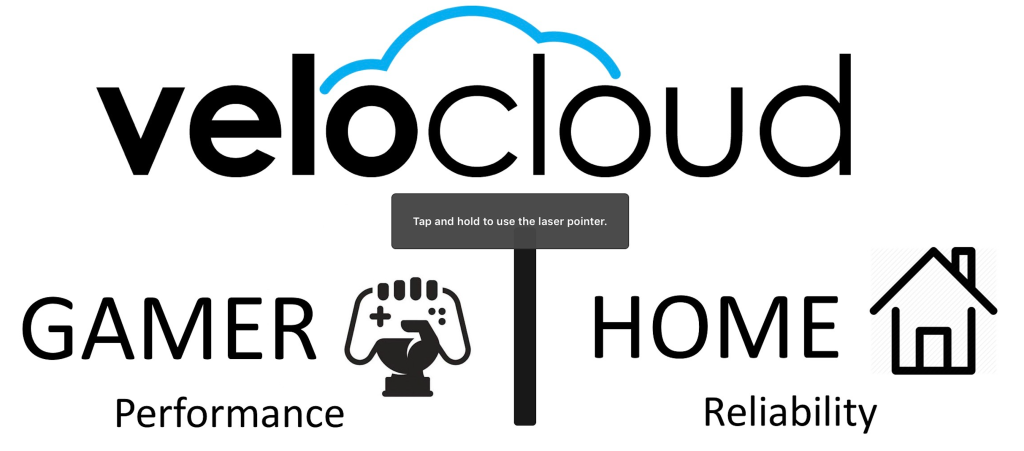
For those not familiar with VeloCloud, it’s a VMware Software-Defined Wide Area Networking solution designed to provide a cloud network service by enabling sites to quickly deploy Enterprise grade access to legacy and cloud applications over both private networks and Internet broadband. It’s comprised of 3 components:
- Edge Devices: zero-touch, enterprise-class devices or virtual software that provide secure and optimized connectivity to private, public and hybrid applications; compute; and virtualized services
- Cloud Gateways: the network that makes up the solution and deployed at top tier network points-of-presence and cloud data centers around the world, providing SDWAN services to the doorstep of SaaS, IaaS and cloud network services, as well as access to private backbones.
- Cloud Orchestrator: this provides centralized enterprise-wide configuration and real-time monitoring, as well as orchestrates the data flow into and through the SDWAN overlay network.
Project Overview
For my project, I was focused on the Edge Devices and specifically looking at how I could leverage the virtual software capabilities (via a virtual appliance) and run this on a small form factor compute device. The project started out by using the virtual appliance on VMware Workstation or Fusion to get a better understanding on how the virtual edge works, how it’s configured and deployed using the zero-touch process. Eventually this moved toward running Workstation on a dedicated small computer but quickly realized that this was not the right hypervisor type for the end-state of the project. Finally, the decision was made to run VMware vSphere on a tiny computer ensuring the hardware components were on the VMware Compatibility list. The Fitlet 2 computer was selected due to the small form factor, expansion capabilities, and fanless design.

The Fitlet 2 expansion options provided a facet card that would provide 2 additional network cards for a total of for network uplinks to use with the hypervisor.
After some experimentation and thought design, the idea around making this a mobile solution seemed appealing (especially since I am an avid camper and wanted good connectivity when working remotely and my mobile office). The challenge here was how to incorporate LTE connectivity and overcome the difficulties around passing the LTE modems through the hypervisor to the SD-WAN virtual appliance to leverage as the WAN connection(s). After doing some more research, the MultiTech cellular to ethernet bridge device seemed like a no-brainer.
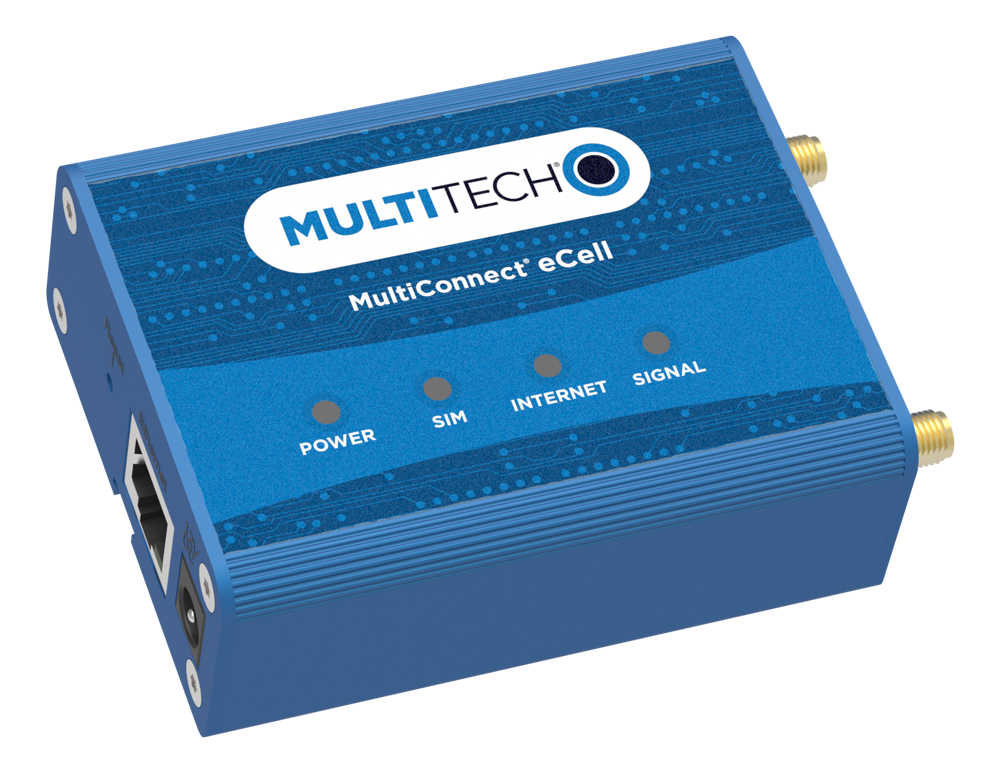
MultiTech took the technical challenge of passing a hardware device through the hypervisor to the virtual SD-WAN appliance out of the picture. Just plugging in an ethernet cable to the Fitlet allowed the vSphere hypervisor to just see another live connection. I figured if one would work, how many could I setup? Since I had 4 ethernet ports, couldn’t I just use 4 MultiTech devices (and I know you’re thinking, what about the LAN connection). I could use the USB ports for extra network connections for the LAN connectivity. I also needed to provide LAN/Wifi capabilities so I incorporated a small/cheap mini wifi router into the mix which ended up with the following configuration.
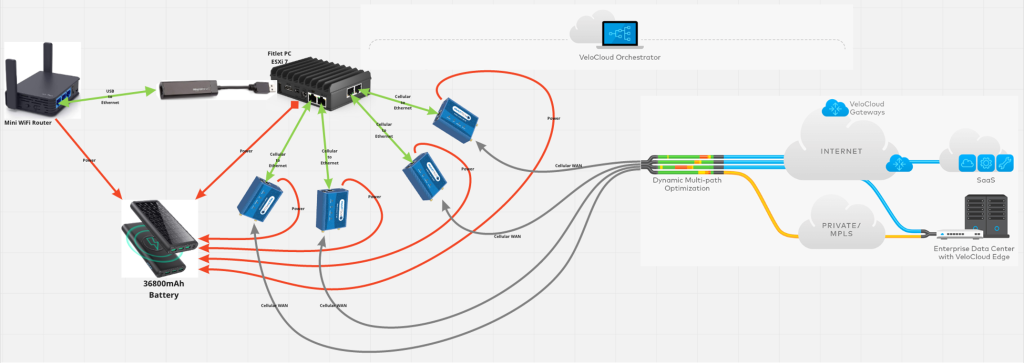
Since all the devices were low power consumption, I added a rechargeable portable battery to the mix and ended up with what you have pictured above. 4 LTE WAN uplinks aggregated together using VeloCloud with LAN connectivity provided by the mini WiFi router. Before connecting to the battery, it was a little cluttered but functional.
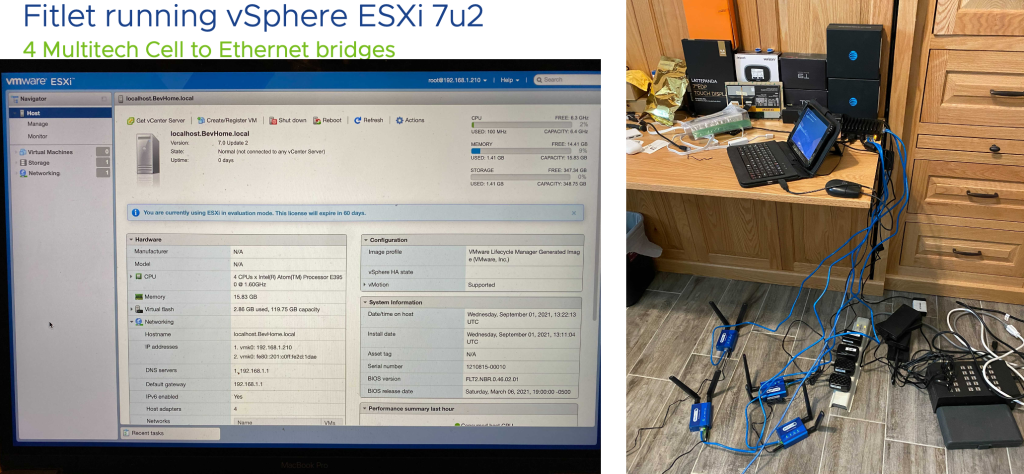
I used AT&T and T-Mobile sim cards, but could have tested this with 4 different carriers or 4 of the same carrier. Either way, I could now see 4 live WAN links displayed in the VeloCloud orchestrator.
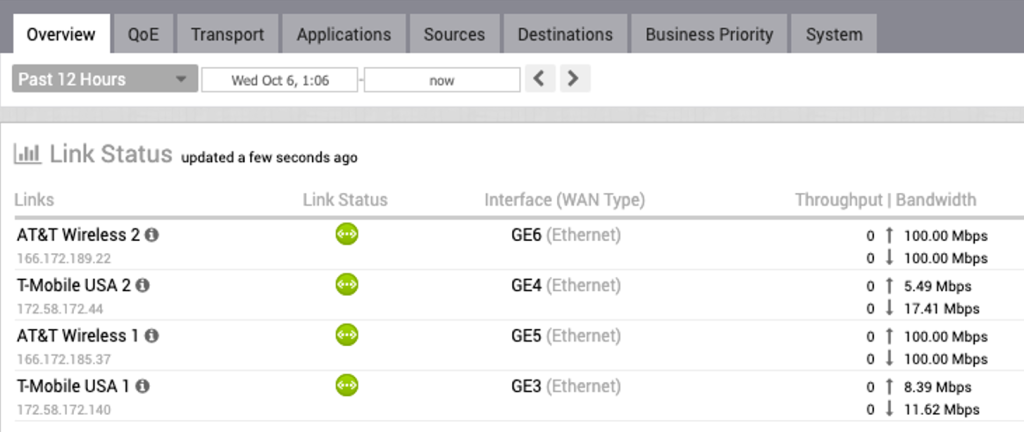
My ultimate goal is to make this smaller with some cable management and ingenuity to make this a high-caliber solution and leverage either something like the VMware fling Pallas or Zededa to manage the orchestration of the hardware and let VeloCloud orchestrate the SD-WAN traffic.
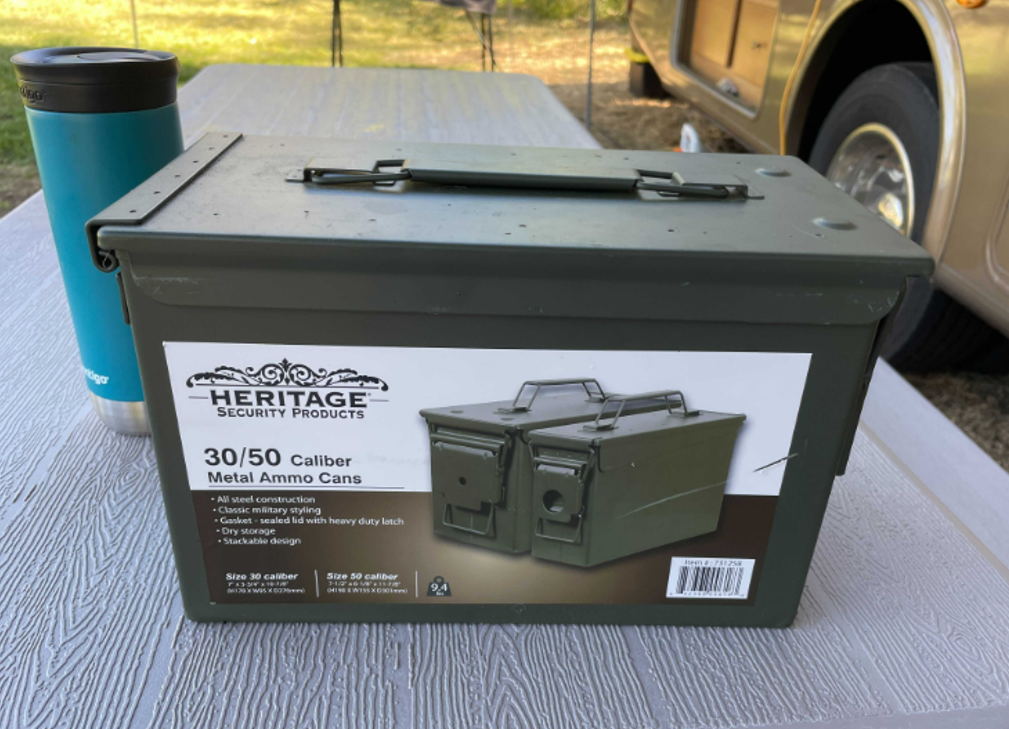
The Future of Mobile Edge
The use cases discovered during this project really involve anything that requires connectivity that isn’t statically place, in other works connectivity that is roaming or mobile. Think of autonomous vehicles, planes, trains and automobiles ( not this one ), civil defense, first responders, etc…
Although I used LTE and the WAN links, you could substitute any connection that allows mobility like satellite services similar to Starlink Roam. 5G LTE coverage is getting better across the globe and 6G isn’t that far behind. With the advances in roaming connectivity options the adoption of Machine Learning, Artificial Intelligence, Blockchain, Robotics, and Automation will become more prevalent at the edge and far edge. I will stick with the project and continue to tweak the design as necessary and hopefully this becomes a good brand that catches on in the industry.
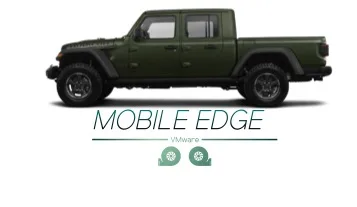
Updates on Vehicle Install
I thought I’d add a few photos of the mobile edge after moving it into my new Jeep. The area behind the seat conveniently had some spaces almost designed for the hardware.
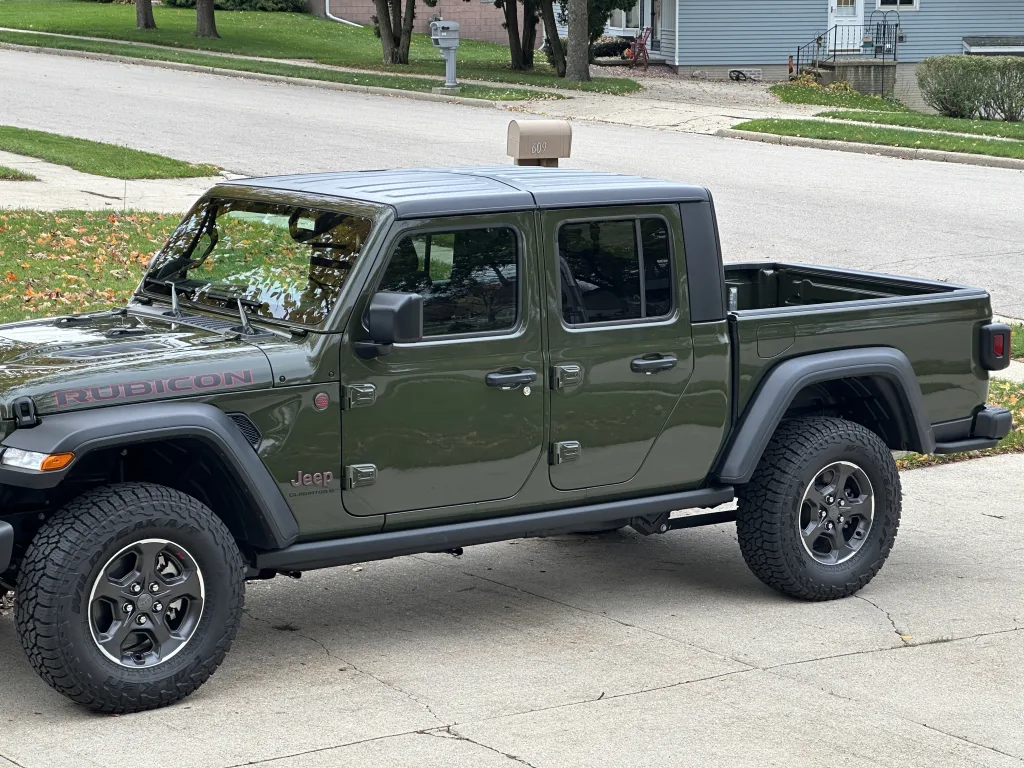
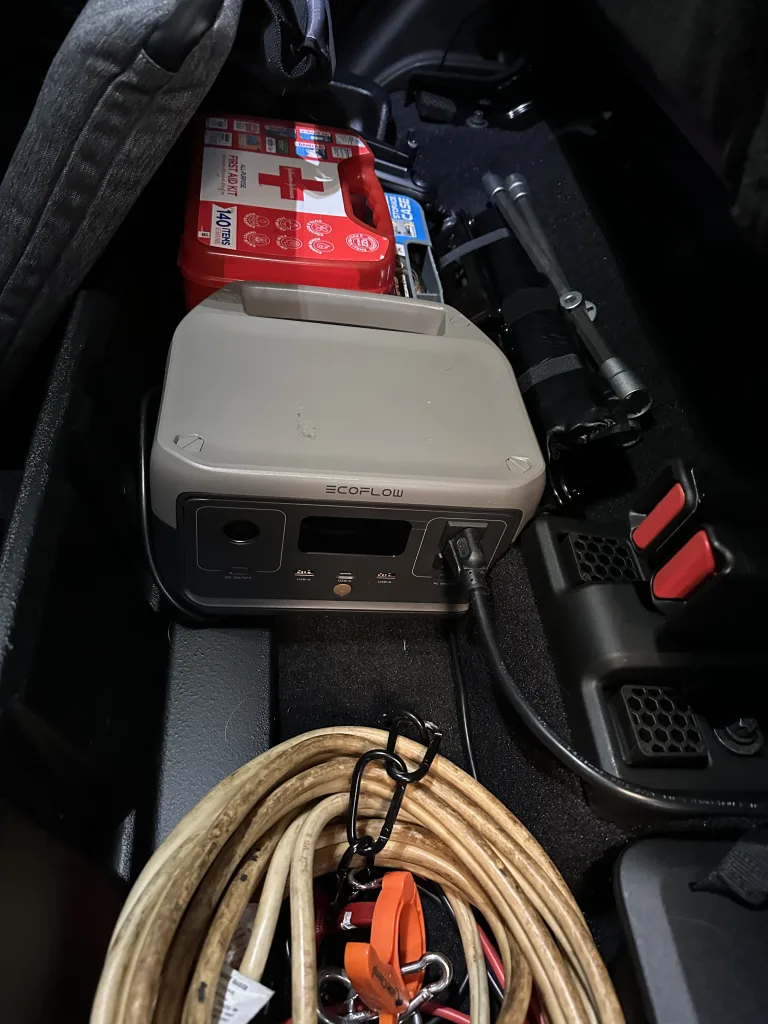
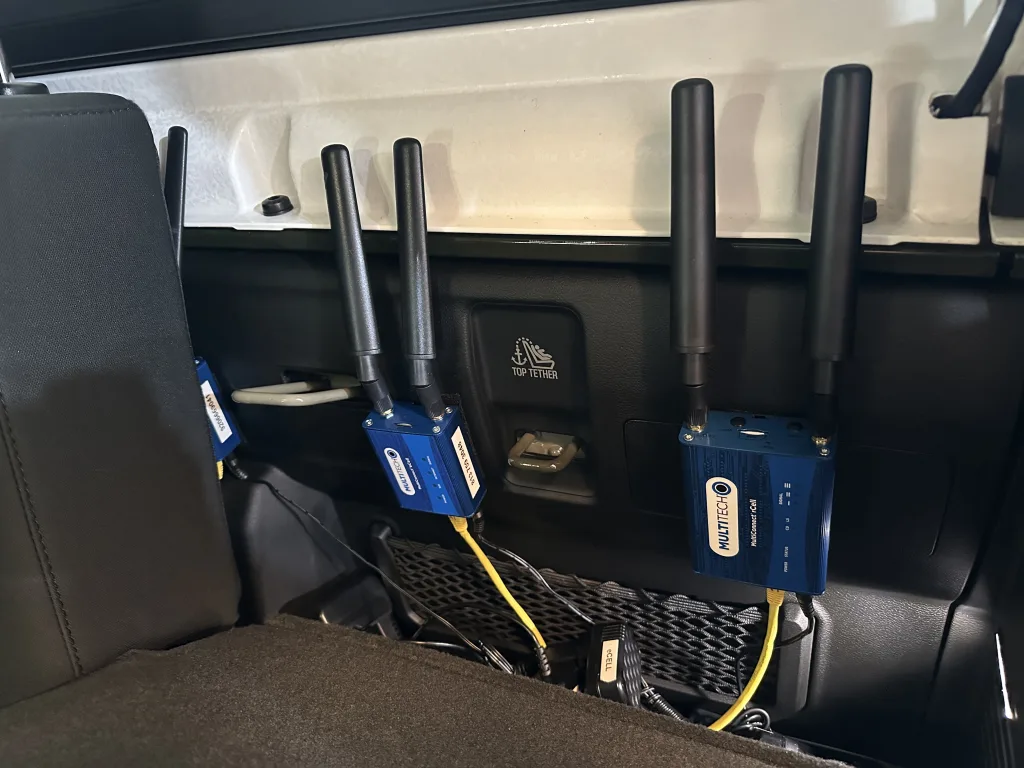
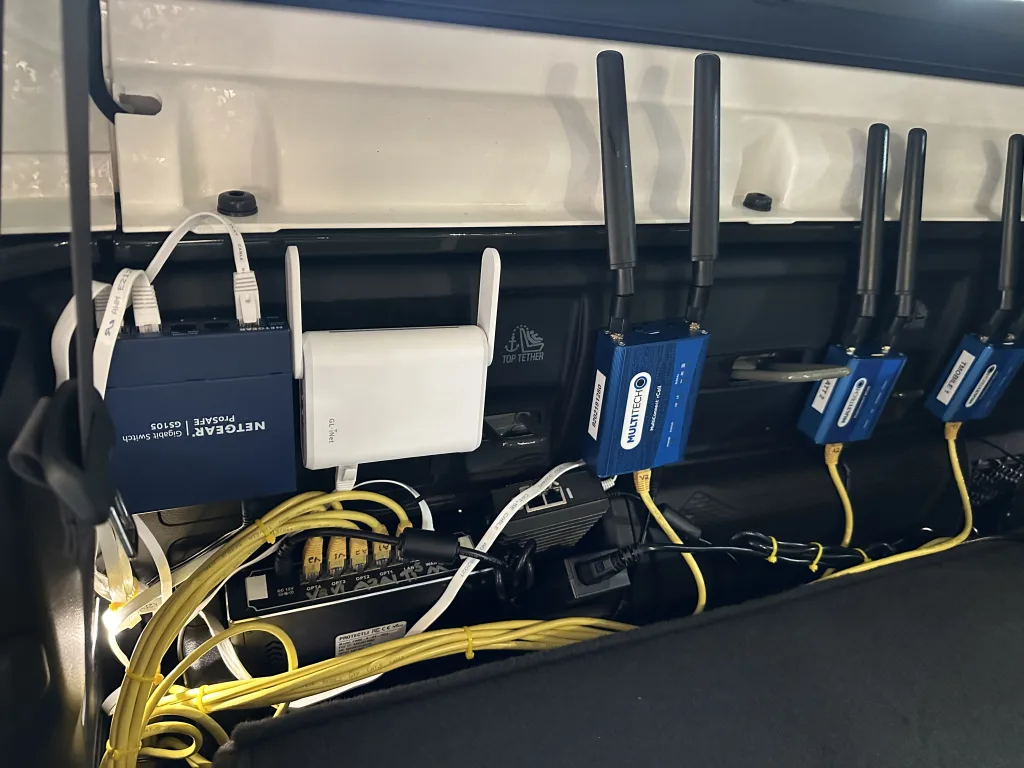


Recent Comments